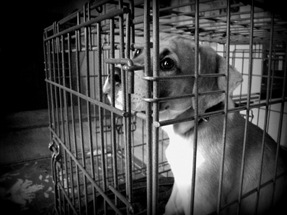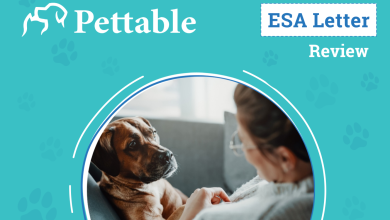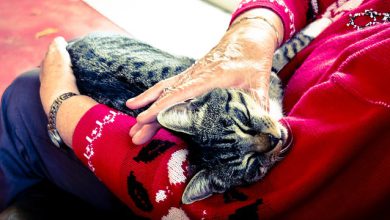
If you got a rescue dog that used to be abused, then you are more likely going to have problems in training him, and you may need to study these Tips For Handling Previously Abused Dogs. This is because abused dogs behave differently than most dogs – they have trust issues due to their traumatic experiences, and you will need to exert more effort and be more patient to regain his trust. In this article, we are going to give you some information, pointers and Tips For Handling Previously Abused Dogs.
Tips For Handling Previously Abused Dogs
First of all, a dog that has been abused usually displays a lot of fear, or it may react by being overly agressive. It is easily startled and is afraid of even the simplest things, like if you suddenly raise your voice or make a loud noise, it moves as if it is startled or alarmed. Because of his traumatic past, he will think that you are angry or will hit him violently. Often you can tell if a dog has been abused if he is afraid of sounds that normal dogs don’t react to, like ambulance sirens, loud noises and fireworks.
Abused dogs also have the tendency to hide under or behind some object such as furniture, trying to avoiding danger and be safe. Again, this stems from its fear of its previous handlers, because they are afraid of being hit..
However, not all abused dogs exhibit this behavior. In fact, some have become totally aggressive due to being provoked all the time. It is quite the same in human nature as it is in dogs – when a person is exposed to violence, he or she will eventually adapt to the situation and return the violence he or she received. Dogs may also become paranoid about possible threats, and become angry or aggressive and may even attack people or other dogs. This kind of aggression depends on how much the dog was abused and what it has faced during its traumatic experiences.
The actions that could possibly trigger your dog’s aggression or fear if he was abused are the following:
- Sudden gestures
- Raising your voice (either to the dog or to other people)
- Saying a word or term that was used by the former owner
- Raising a hand, as if to hit
- Touching the dog in a wounded area
- Using objects like tennis rackets or ball bats
If you do one of these actions and your dog starts to bark or growl aggressively, then try to avoid that behavior. Also note that because your dog has trust issues, it may not be easy to pet or groom him; that is why you will need to train him to trust you and other people first.
Special training is required for abused dogs, because of their fear and trust issues. Be gentle with your voice and gestures and always try to calm him down. You will very likely need the assistance of a behavioral trainer, but be sure to take part in the training procedure so that you will be able to gain your dog’s trust, and that you will eventually be seen as the “alpha” dog.
These tips are summarized well in an eHow.com article:
Adopting a dog that has been abused can be a very rewarding experience. In most cases, the effects of the abuse can be reversed over time. However, it is important to remember that the dog comes to you with a history in which humans were not very kind. It can take a lot of time and patience to prove to the dog that not all humans are mean.
Dealing with a dog with such a past is probably the biggest challenge a dog owner will ever face. Hopefully these Tips For Handling Previously Abused Dogs will be of help.
Have you owned an abused dog that was particularly challenging? Was there any trick you used that was especially helpful? If so, please share below.



